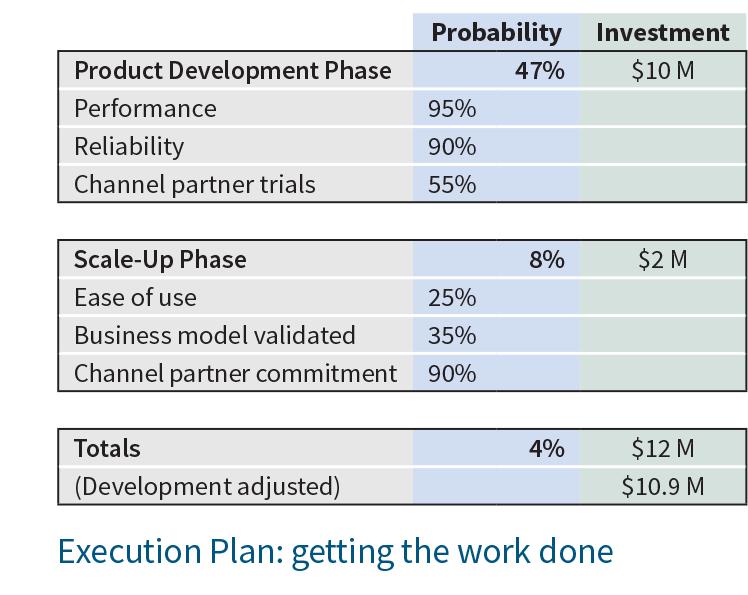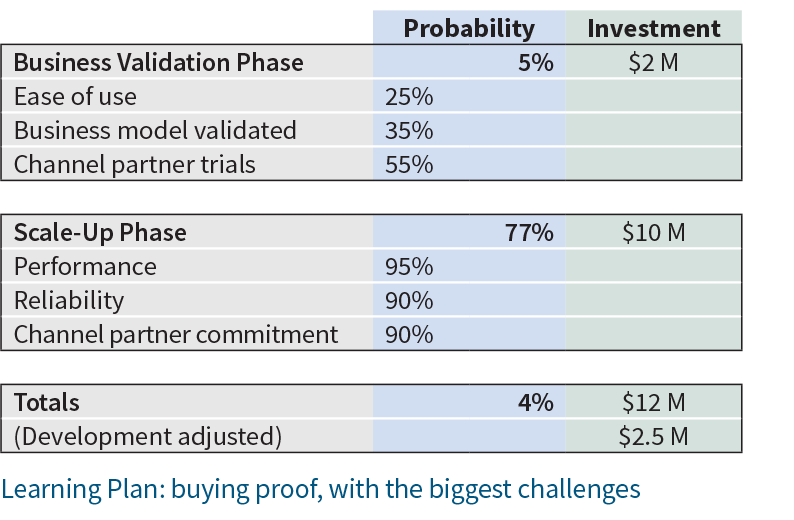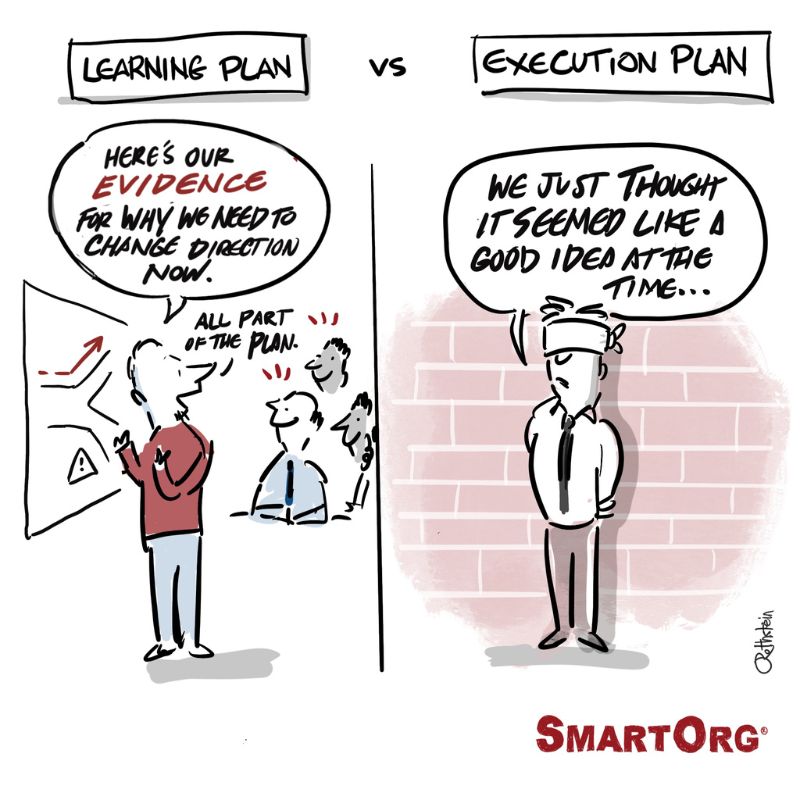Failing Forward Quickly with a Learning Plan
By David Matheson  4 min read
4 min read
[Updated 04-09-24] Breakthrough innovation takes an organization out of its familiar comfort zone into a realm of uncertainty. Unlike incremental innovations into existing product domains and markets where the behavior of technology and customers is well understood, breakthrough innovations entail using new technologies, selling to new kinds of customers, entering new markets, or all three at once. During the incubation phase for each such project, questions will arise about whether and how the project can proceed successfully – and a negative answer could spell its end. When pursuing projects like these, it is imperative to pursue the answers to those questions in the correct order to avoid putting time and money into a doomed project.
The Learning Plan consists of a series of experiments to undertake and proof points to achieve during the incubation phase of the project. Each proof point is something that must be true for the project to meet its objectives. These experiments and proof points are placed in a time sequence that address the most significant sources of risk first; doing so lets you de-risk the project as cheaply as possible by finding out early on which hurdles you can and can’t overcome. The Learning Plan also establishes pivot meetings, at which time decisions are made to punt, pivot, or persevere based upon the evidence you have gathered through experimentation. Failure to satisfy a proof point may lead to canceling the project to avoid further costs, while uncovering significant upside potential might result in a changing course to pursue the new opportunity. These pivot meetings create options for the project during incubation that you can exercise at each step to achieve the best outcome available.
Here is an example from an HP project to create a consumer photo print kiosk. With HP’s vast expertise in digital printing, it seemed a natural fit to offer consumers a self-serve option to print their digital photos. Initially, HP focused on the technical challenges, the familiar and relatively easy work to create a proof-of-concept prototype. They planned to put off the harder questions of whether consumers would actually use these kiosks, and whether channel partners would want to be part of this business. Their initial approach looked like a typical execution plan, focused on achieving milestones to create a sense of progress.


We were able to show HP there was a better plan — a Learning Plan — that was focused on buying evidence at each proof point and would help them get to these make-or-break decisions more cheaply. This Learning Plan tells management, “all we need to begin is $2 million to explore the first proof point, which has a 5% chance of success. If that does succeed, we will ask for a further investment of $10 million to explore the second proof point and go to market, where we believe we will have a 77% chance of success.”
By reordering the tasks to put the most difficult (and uncertain) ones first, if the project failed to produce evidence to satisfy the proof point, that would happen with much less money spent. Moreover, if the project survived the business validation phase, the probability of ultimate success would rise substantially. This example shows how improving decision quality turns an idea into an investment-grade innovation proposal.

A Learning Plan helps to quell internal panic that is sometimes induced by innovation. Innovators often act like either trailblazers or undercover operatives. The trailblazers tell the organization: “Trust us and fund us, and we’ll deliver a breakthrough innovation.” The undercover operatives don’t tell the organization anything, hoping to fly under the radar and complete their work before fearful managers realize what they’re doing and put a stop to it. With a Learning Plan, innovators can present the organization with a concise proposal that shows efficient use of funding and realistic expectations. This more balanced, transparent approach helps the innovators calm the panic and gain the commitment of the organization to fund the proposed work and let them carry it out to completion.
Want to reduce risk? See how a Learning Plan provides a road map for incubation in SmartOrg’s Innovation Navigator®.